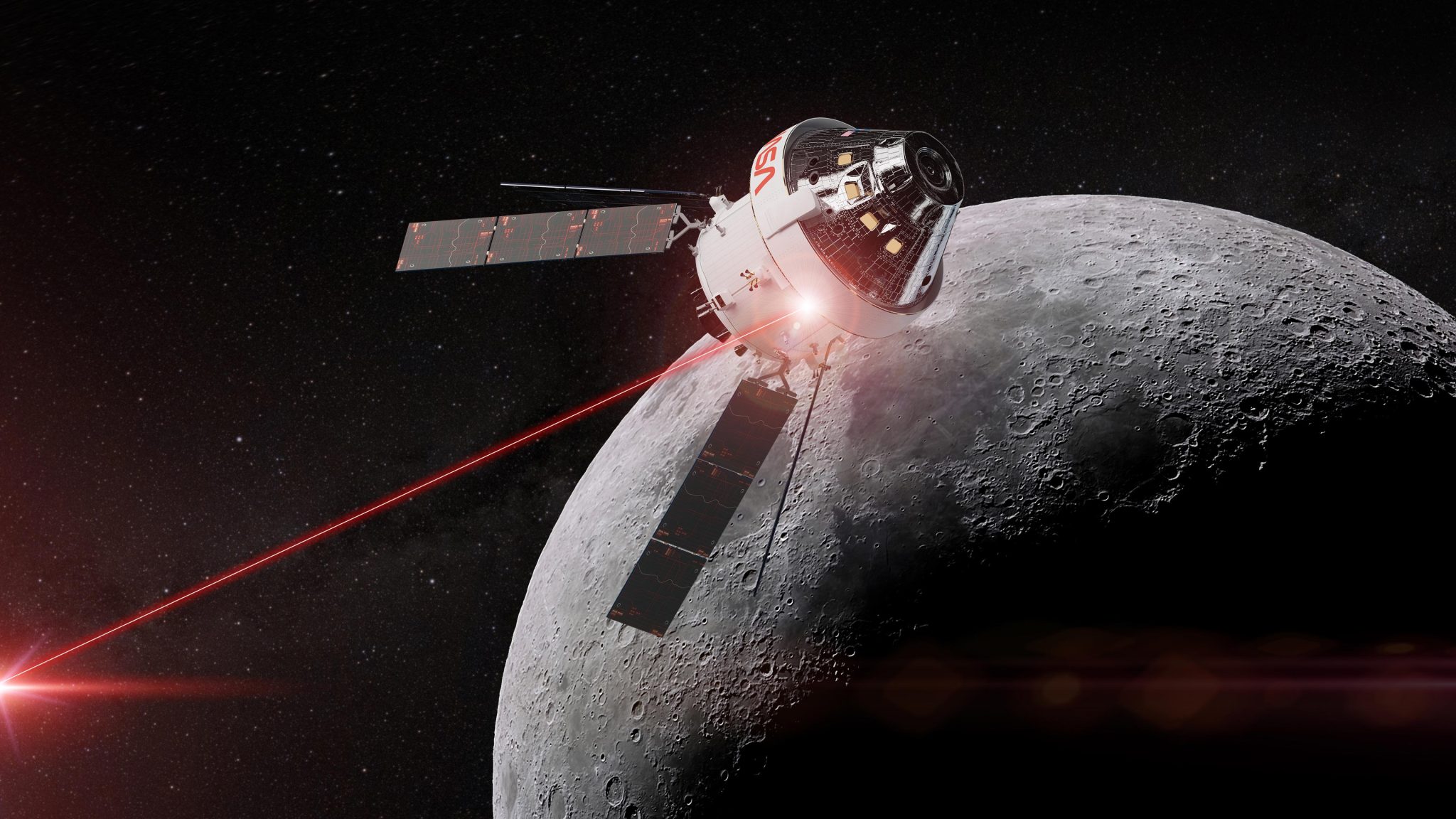
The Orion Artemis II Optical Communications System (O2O), a laser communications system for NASA’s Artemis II mission, has been delivered to NASA’s Kennedy Space Center in Florida for integration with the Orion spacecraft. This mission will see astronauts fly around the moon for the first time since the Apollo missions, utilizing advanced technologies such as O2O. Credit: NASA
Equipping the space station to produce more power …
Equipping the Space Station to Produce More Power
On June 15, NASA astronauts Steve Bowen and Woody Hoburg conducted their second spacewalk in a week to install an upgraded orbiting laboratory to generate about 30% more power.
The X-66A is the X-plane specifically aimed at helping the United States achieve the goal of net-zero greenhouse gas emissions by 2050. To build the X-66A, Boeing will work with NASA to modify an MD-90 aircraft, shortening the fuselage and replacing its wings and engines. The resulting demonstrator aircraft will have long, thin wings with engines mounted underneath and a set of aerodynamic trusses for support. The design, which Boeing submitted for NASA’s Sustainable Flight Demonstrator project, is known as a Transonic Truss-Braced Wing. Credit: NASA
Next Generation Experimental Aircraft is Newest X-Plane
During the AIAA Aviation forum the week of June 12 in San Diego, NASA and Boeing announced that the experimental aircraft produced through the agency’s Sustainable Flight Demonstrator project has become NASA’s newest X-plane — designated by the U.S. Air Force as the X-66A. Working with NASA, Boeing will build, test, and fly the Transonic Truss-Braced Wing concept aircraft with the specific goal of helping the U.S. achieve net-zero greenhouse gas emissions by 2050.
The O2O payload at Kennedy Space Center undergoing unpacking and examination. Credit: NASA / Isaac Watson
Orion to Test Laser Communications on Artemis II
The Orion spacecraft that will carry astronauts around the Moon on NASA’s Artemis II mission will also test a new laser communications terminal known as the Orion Artemis II Optical Communications System, or O2O. Laser communications systems offer increased data transfer rates that allow more information to be sent in a single transmission than with traditional radio wave systems. More data could mean more discoveries.
Curiosity’s ‘Postcard’ of ‘Marker Band Valley’: NASA’s Curiosity Mars rover used its black-and-white navigation cameras to capture panoramas at two times of day on April 8, 2023. Credit: NASA/JPL-Caltech
Curiosity Captures Martian Morning, Afternoon in New “Postcard”
NASA’s Curiosity Mars rover recently captured this composite image of an area known as “Marker Band Valley.” The image combines a morning scene, an afternoon scene, and added color for artistic interpretation. The combined dramatically different lighting conditions at those times of day make details in the scene stand out. Marker Band Valley is in the region where the rover unexpectedly discovered signs of an ancient lake.
That’s what’s up this week @NASA